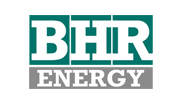The Process
a. The feedstock is loaded into a static ADVANCED SMOLDERING CELL, when the cell is full, the cell is closed and the smoldering process starts.
b. The system continuously controls the oxidation process, avoiding the formation of any type of flame in order to not allow the formation of any smoke.
c. The process slowly progresses until all the organic compounds content of the feedstock is transformed into a synthetic fuel gas.
d. During this phase we do not have any formation of smoke or flying ashes, allowing the production of a high quality synthetic fuel gas.
e. The synthetic fuel gas is then burned into a combustion chamber, achieving the same environmental effect that we have when we burn the natural gas.
f. The high temperature heat produced by the system is then transformed into a medium temperature heat and, if required, into electricity.
g. The CO2 and water produced during the oxidation can be used for green houses.
h. The ash is removed from the cell and the metals are collected for their valorization.
i. The cell is ready for the next cycle.
The advanced smoldering technology is a “no flame” oxidation technology that allows the thermal destruction of organic compounds while recovering inert materials and completely avoiding environmental pollution.
i. Technology: Advanced Smoldering
ii. Process Temperature: ≃ 400 °C
iii. Sterilization Capability: Thermal Destruction of viruses and bacteria
iv. Heat Recovery Capability: > 90% of the feedstock LHV
v. Metals Recovery Capability: >90% of the feedstock metal content
vi. Inert Ash: Typical ≃ 3% of the feedstock weight
vii. Air Pollution Level: 0% dioxins, furans
.
Compared to conventional methods for the incineration of municipal solid waste, the emissions related to the exhaust gas produced by the system have a significantly lower content of polluting components.
Total absence of dioxins and furans: The system do not allow the formation of dioxins and furans. The production of dioxin in the classical plants related to waste combustion (e.g. incinerators) can be pulled down only through complex and expensive abatement filters that in any case do not completely remove the risks for human health.
Very low concentration of NOx and SOx : These pollutants allows the formation of acid rains, photochemical smog, tropospheric ozone and other compounds damaging health and the environment. The sub stoichiometric quantity of air used by the system prevent the formation of these pollutants.
Insignificant particulate emissions: Suspended particles can cause serious lung diseases, allergies and irritation of the mucous membranes of humans and other live organisms. Among the very dangerous residues of combustion, there are the fine powders containing heavy metals, such as cadmium, copper, lead and vanadium. The smoldering system reduces the particulate emissions to insignificant level because the feedstock is not moved during the process and the law temperature used do not allow the raising of any dust.
The system can manage organic based feedstock with the following parameters:
_humidity content up to 50%
_energy content from 2 kWh/kg
_no pretreatment is required
_no screening is required
_no homogenization is required







